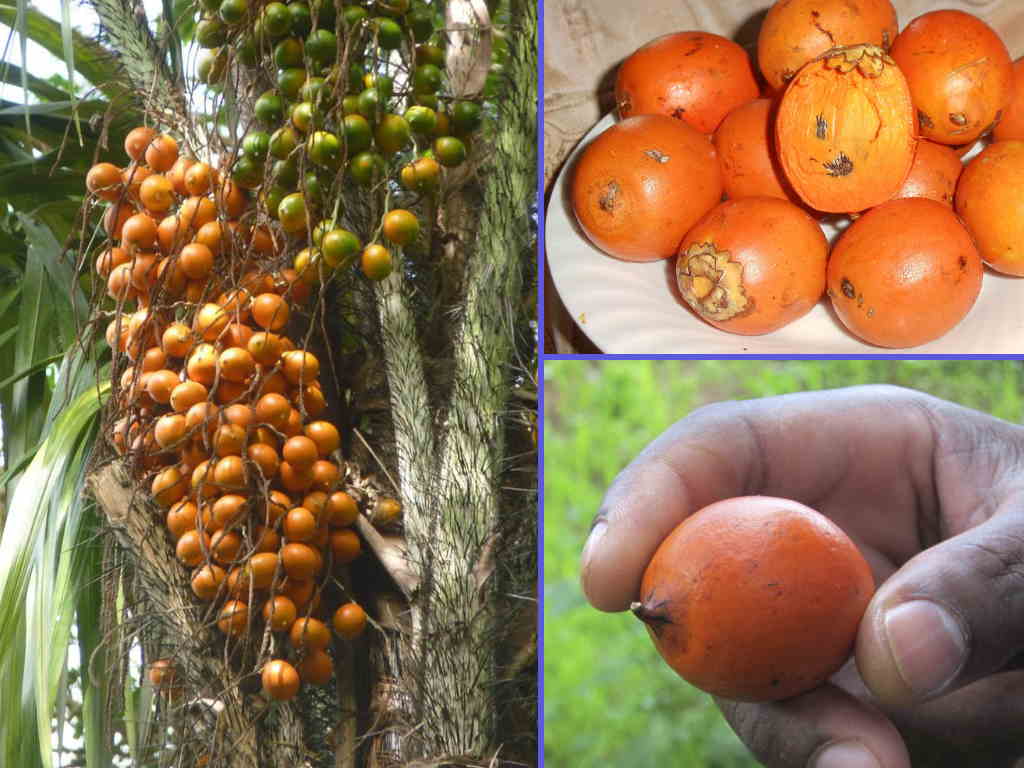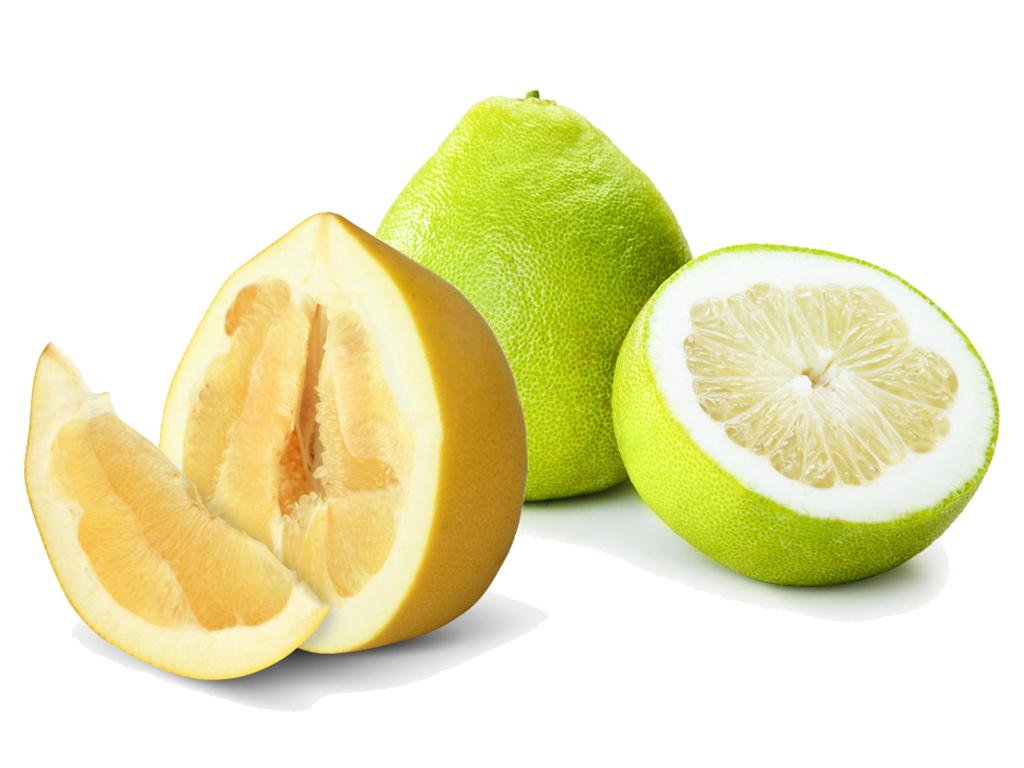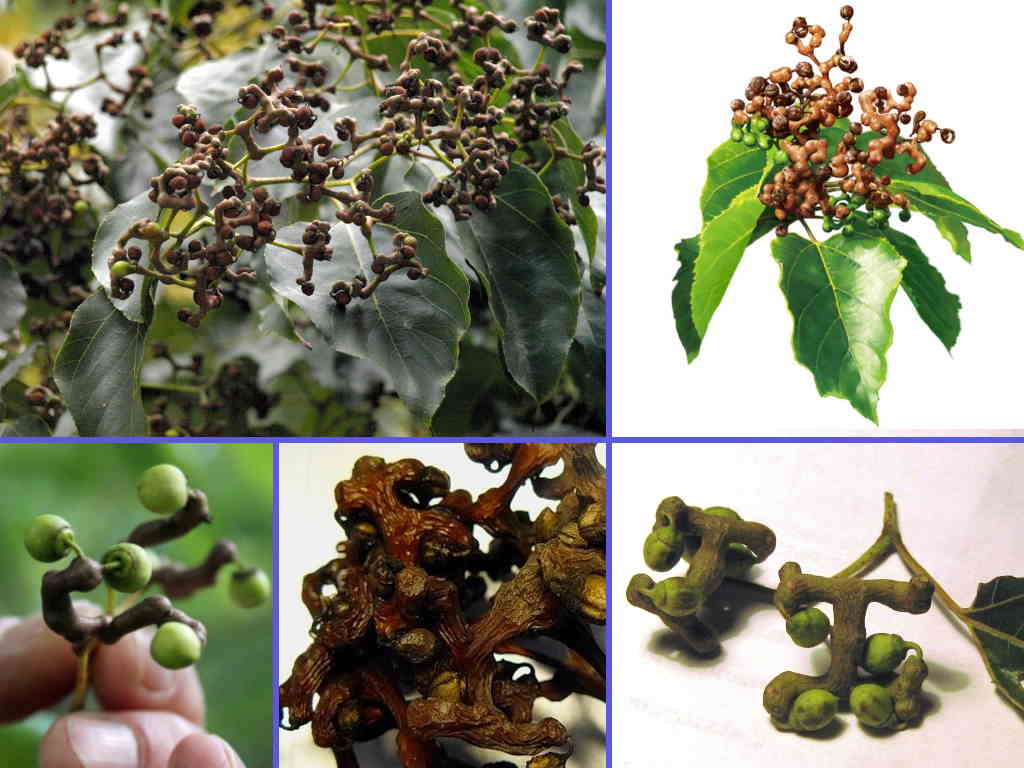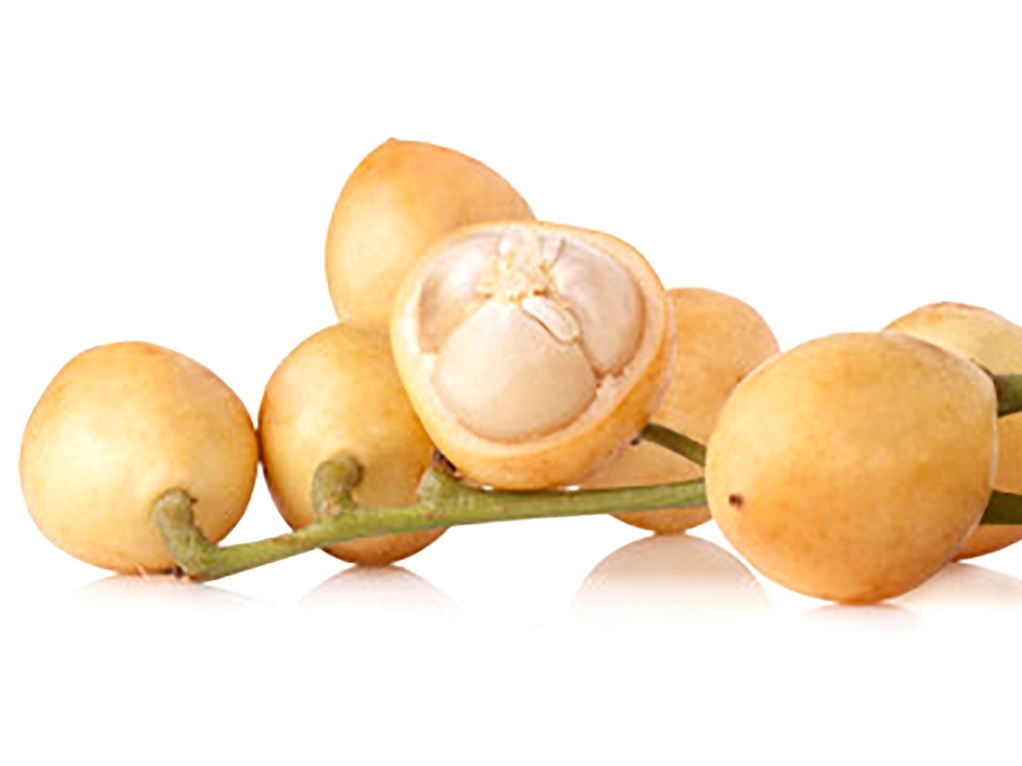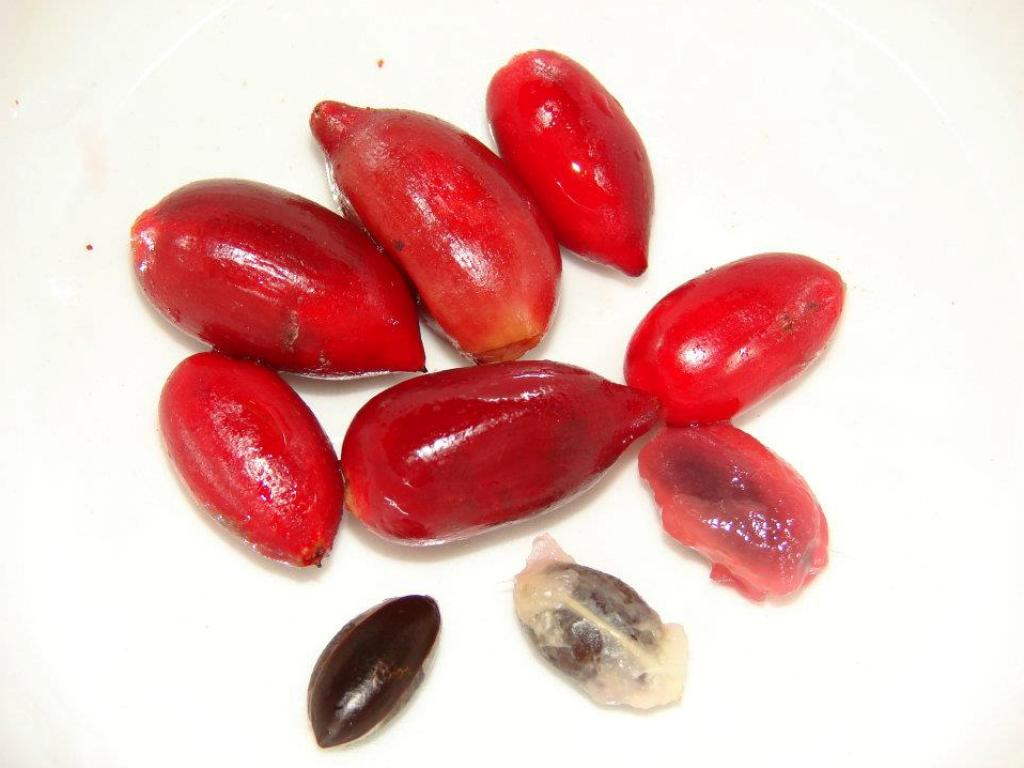Santol or Cato
 Santol grows in the countries of Southeast Asia (Thailand, Vietnam, Cambodia, Laos, Indonesia, Philippines).
Santol grows in the countries of Southeast Asia (Thailand, Vietnam, Cambodia, Laos, Indonesia, Philippines).
The fruit of Santola has a rounded shape from 8 to 15 cm in diameter with a long peduncle. Depending on the variety, it can be from yellowish to brown in color, on top the peel is slightly velvety. The color of the fetus is usually uneven with pigmentation over the entire surface. Under a rather thick peel lies a whitish opaque flesh similar to “garlic” slices, up to 5 pieces.Inside each lobule there is a large brownish stone (it is not recommended to eat it unnecessarily, because it has a laxative effect). The pulp is juicy in taste, ranging from sour to sweet and sour, it reminds a little mangosteen. As a rule, the fruits of yellowish varieties are sweeter.
Before use, you need to peel the fruit from the peel (it is inedible), previously cutting it across into two halves, using a knife or peeling with your hands, and then remove the pulp slices and free them from the stones. The pulp is poorly separated from the bone, so it is customary to suck it. Sometimes Santol is eaten with salt and pepper.
Santola fruits contain a large amount of iron, magnesium, fluorine.
They are used in cooking (desserts, alcohol) and cosmetology (masks, scrubs).
The ripening season is from May to June.
